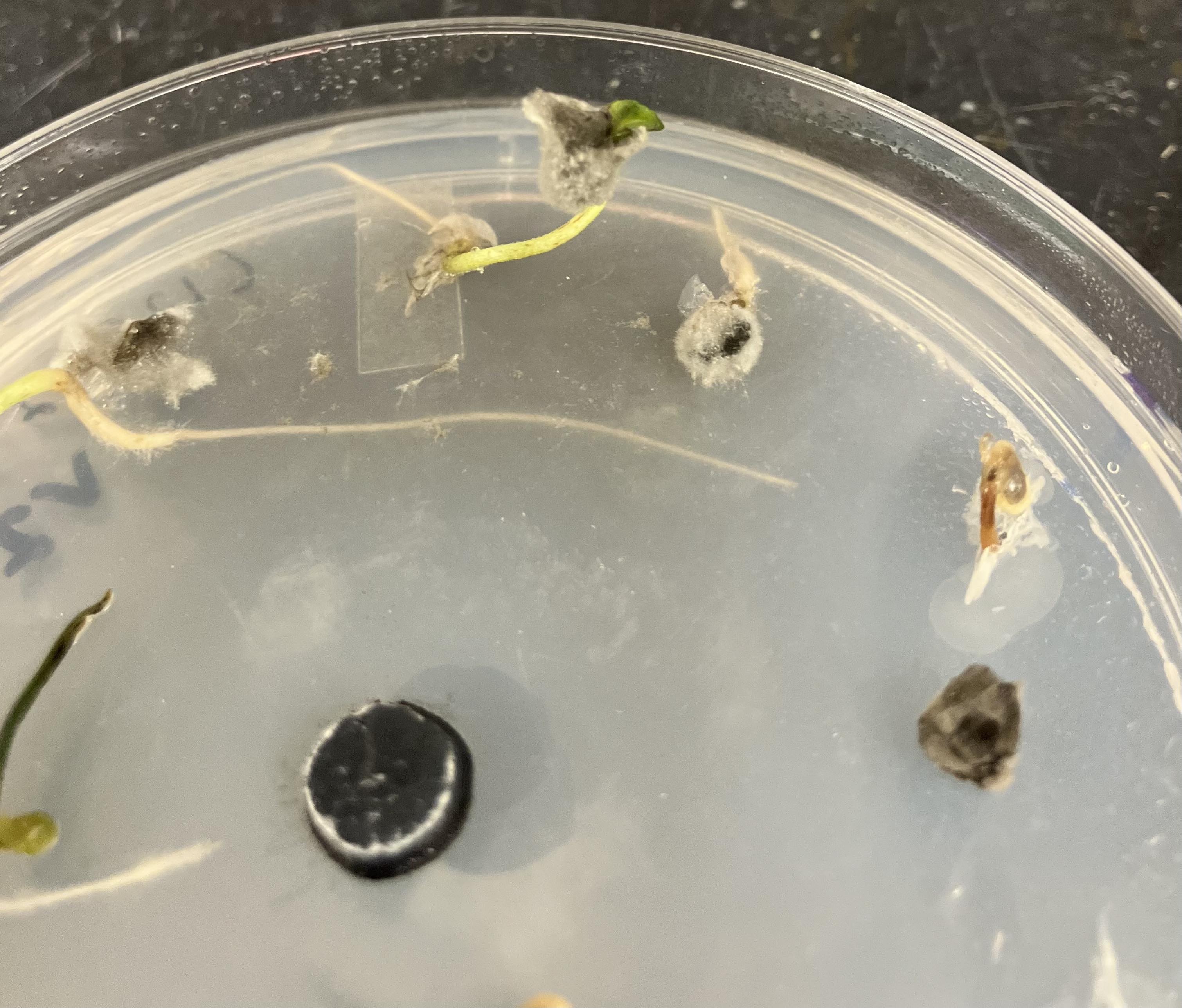Texas A&M Advanced Varieties vs Verticillium Wilt
One of the major pathogens plaguing the southwest chile pepper production is a wilt disease known as verticillium wilt (with the causal agent being Verticillium dahliae). Symptoms of this pathogen include yellowing of lower leaves and sudden wilt, resulting in death. Current research in our lab includes field, microplot, lab, and greenhouse trials to determine the resistance or tolerance of Texas A&M varieties to this pathogen.
Lab Trials
Lab trials of verticillium wilt were conducted using water agar plates and four Texas A&M chile pepper varieties. These four varieties were C127, C129, C130, and C188. A mycelium plug of pure V. dahliae culture was placed in the center of the water agar plate and allowed to grow until the mycelium reached the edges of the plate. The four Texas A&M varieties were then surface sterilized using ethanol (EtOH), 10% bleach, and deionized (DI) water, dried using paper towels to limit bacterial contamination, and then placed around the circumference of the plate. Ten seeds were used per plate and each plate was replicated four times. Results were recorded once symptoms were shown on the seeds or seedlings.


Above (left): V. dahliae is observed growing on the chile seeds and seedlings
Above (right): The water agar plates set-up with the pathogen (V. dahliae) and the Texas A&M chile varieties
Growing chile seeds on water agar plates in the laboratory gives a clear picture of the interaction between the plants and the pathogen. Due to the controlled and sterile environment the laboratory provides, variables such as outside factors influencing plant-pathogen interactions are able to be eliminated or reduced.